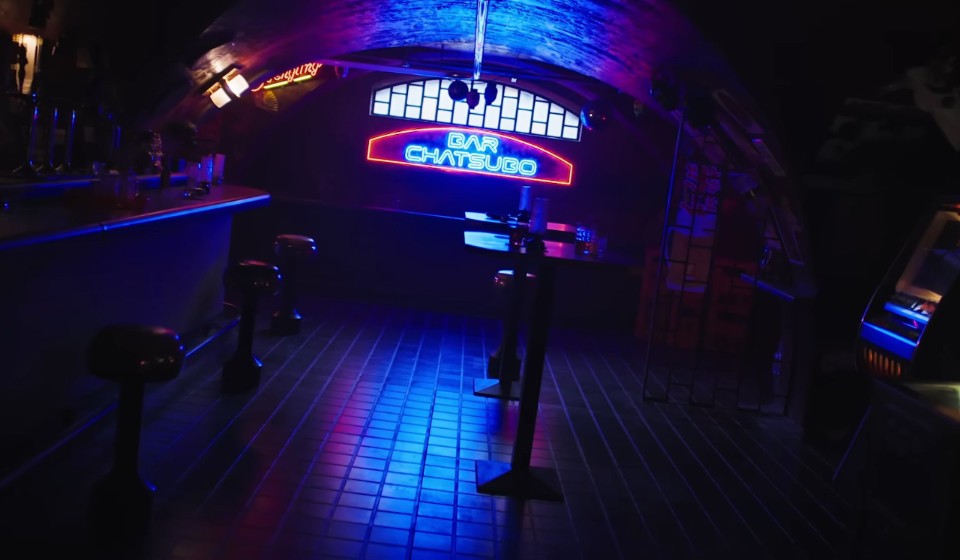“I imagined the Chatsubo in 1984. 41 year later, I opened the door. Neuromancer is in production”.
It is no coincidence that the first teaser for Apple TV+’s adaptation of William Gibson’s cyberpunk manifesto opens inside a dark, worn bar, heavy with nighttime energy. And it’s not by chance that this bar is the Chatsubo of Chiba City—the canonical cyberpunk architectural device where the boundaries between lowlife and high-tech melt in neon glow.
In this ultra-brief 26‑second teaser, Apple TV+ plunks us into the beating heart of Neuromancer’s universe: an expats’ bar, a refuge for hacktivists and cyborgs; a hub into the urban anthropology of Chiba City, that Babel-like metropolis reflecting the genre’s stratified and hybrid nature. The interior architecture’s reflective surfaces, neon lanterns and modular seating, echoes the dense, vertical quarters of Tokyo and Shinjuku, real and symbolic spaces Gibson described as “electronic landscapes.”
With this first image, Apple TV+ allows the architectural spaces of enforced solitude and marginalisation to tease our expectations, reaffirming the centrality of urban space in shaping characters’ destinies and forging an aesthetic as timeless as it is instantly recognisable. The flickering neon and cryptic atmosphere evoke not a utopic modernity but a lived one, in perfect line with the critical sensibility that made cyberpunk genre endure.
Thus, this entrance into the bar attains a paradigmatic weight: the bar as space of urban resistance, of clandestine exchanges and otherness, becomes the arché of cyberpunk space – a stage from which to begin. The Chatsubo may appear empty, but it is haunted: haunted by images and presences shaped by our imagination and, we hope, soon to find concrete form in the new Neuromancer series.


